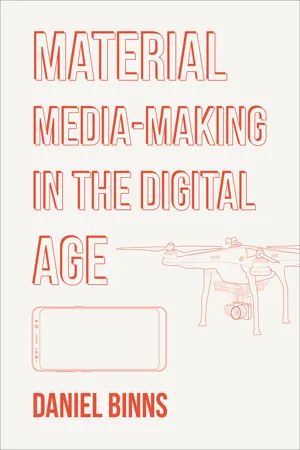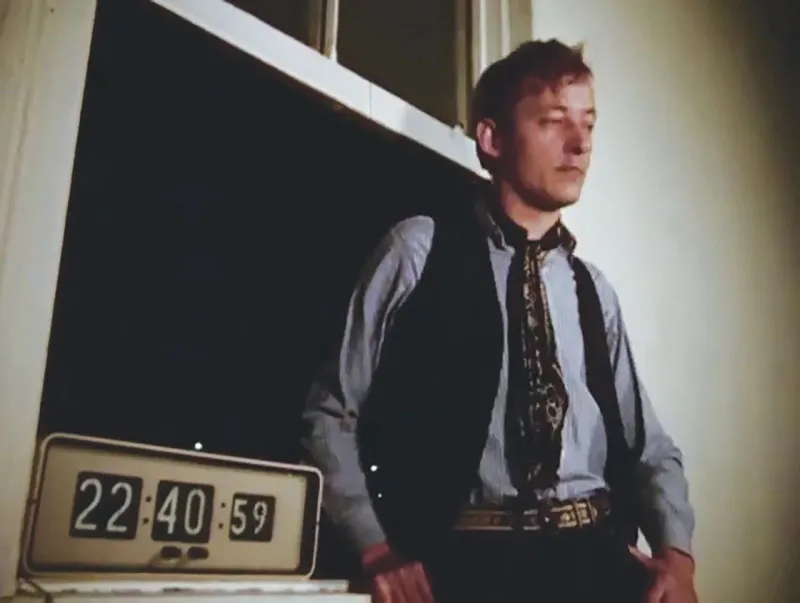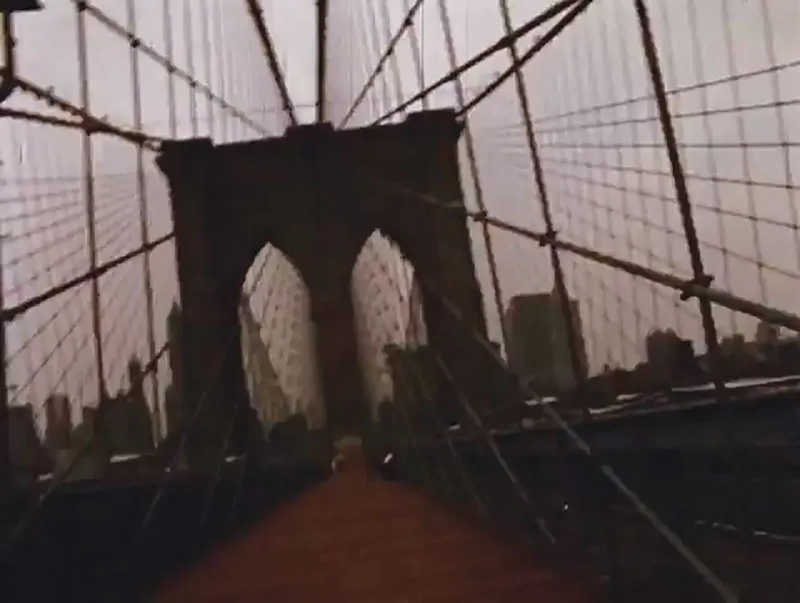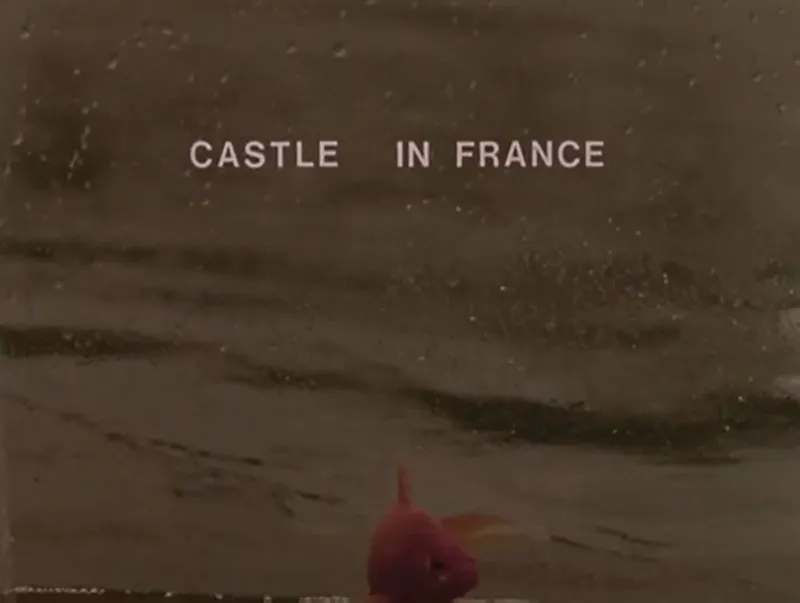![]()
There are a couple of ‘classic’ eras of avant-garde cinema. The earliest takes in those very first days of film, when the medium and craft itself was brand new. This early period is what Tom Gunning (1986) would come to call ‘the cinema of attractions’, where spectacle and visual stimulation were core to the experience; narrative had yet to fully emerge on screen. One might also think of the art, animation and editing boom of the 1930s and 1940s where Len Lye, Maya Deren and Kenneth Anger emerged. Perhaps the glory days of western experimental film were the 1960s and 1970s, centred particularly around New York City. And I would certainly suggest that the digital era has engendered a new generation of artists thinking through the materials of the moving image in really fascinating ways.
This opening chapter starts by looking back over some previous examples of avant-garde cinema, beginning in the 1960s with an unpacking of Hollis Frampton’s Surface Tension (1968). I then move forward in time to more recent examples. The aim is to explore how these filmmakers and artists have used form and material to grapple with problems of representation and new technological tools and environments. From these examples, I begin to articulate some principles of a materially inflected making practice that can transcend analogue/digital boundaries.
I then talk through the construction of my own experimental work: a terrifying prospect for a maker who up until this point had relied almost exclusively on the presence of scripts, shot lists and other people on set. This first chapter also establishes the template that is (mostly) adhered to throughout the rest of this book: analysis of existing media objects; discussion of themes and extraction of principles; reflection on practical experimentation and making and, finally, exercises for the reader to attempt.
*****
I’ve always believed that experimental film is saying something important; it’s just saying it in a language I never really learnt to speak. My first exposure to avant-garde film was in an introductory cinema studies course, where we were shown Maya Deren and Alexandr Hackenschmied’s Meshes of the Afternoon (1943) and Michael Snow’s Wavelength (1967). I remember being surprised by the succinctness of Deren’s work, and the soul-crushing, cringe-inducing, rear-end-numbing tedium of Snow’s. Since those heady undergraduate days, I have maintained a fascination with avant-garde film, and this project offered me an opportunity to try and understand what this category of moving image might be trying to achieve.
D. N. Rodowick sums up the mission of the avant-garde cinema movement of the 1960s and 1970s thus:
This quote seems to be a rich and fertile ground to begin to unpack what experimental film might offer both makers and viewers. From the latter’s perspective, this return to ‘aesthetic purity’, to ‘fundamental artistic materials’, this ‘drawing attention to the grain and materiality of the image’s surface’ might result in more of a sensation or series of disconnected thoughts or feelings than any kind of emotional resonance. For a maker, though, Rodowick’s summary brings to the fore the various surfaces and subjects that are at play in the two-dimensional moving image: the ‘flatness’ of the screen; the ‘surface’ of the image; the perceptual rupture of the edit. These raw materials are what experimental film allows makers to play with. In avant-garde cinema, according to Peter Gidal, ‘there is no ontology’ (1989: 119). The conventional rules or relationships that govern other forms of moving image media do not apply: anything goes.
So, with that liberated mindset, let’s wind the clock back to 1968…
Boxes within boxes: Surface Tension
Like much of Hollis Frampton’s work, Surface Tension plays with time and with structure, and it offers few obvious cues to the viewer as to its meaning, or whether it has any meaning whatsoever. The film is book-ended by shots of waves rolling in. Between these two shots, there are three main sections. The first consists of a man standing next to a window, an alarm clock sitting on the sill next to him. The man adjusts the clock and begins to speak, but the film is sped up. We do not hear location sound; instead, a single phone rings incessantly for the three or so minutes that this section runs. The second section runs for two minutes and 40 seconds, and it’s a chaotic walk through Manhattan, composed of film grabs of no more than a couple of frames. The soundtrack to this section is a man speaking in German. The third and final section appears to be a composite of a goldfish swimming in a tank, the tank being buffeted by waves. A similar effect may have been achieved by simply placing a fish tank in shallow waters. Regardless, as the waves roll in and the fish swims about, snippets of text flash on the screen, connected grammatically if not narratively or thematically.
What initially struck me about the film was its attitude to time and to structure. The first section is a mixture of film sped up and allowed to run in real-time; the middle section is almost photos sutured together, with little attempt at stabilization; the final section, a composite image. There are three sections; a triptych of sorts. Frampton also supposedly bucks one of the largest alleged trends of experimental cinema with his approach to narrative. The final third of the film tells something of a story: there are certainly recognizable narrative tropes in the text that is superimposed across the aquatic imagery.
It wasn’t until my fourth or fifth viewing that it occurred to me that the person standing by the window, talking, might not be Frampton himself. A quick look at Frampton’s portrait confirms that it is clearly a different person, but often in experimental film faces are not that important. People aren’t really characters in a narrative sense as much as they are figures or gestures: bodies roiling on the surface of the screen; as much shapes as the dancing lines or triangles in Ballet Mecanique (1924). The ‘liner notes’ to the Hollis Frampton Odyssey Criterion set reveal that this figure by the window is in fact Kaspar Koenig, renowned German artist and provider of the German voice-over for the second section of the film.
The opening segment lasts for three minutes and ten seconds, and shows the artist speaking to camera, but sped up. Occasionally the footage returns to real-time, as Koenig adjusts the clock, and then there is a cut to black, before this stage direction repeats multiple times. The soundtrack, as aforementioned, is an increasingly irritating phone ringing. For first-time viewers, the opening section is hard to place, and even with repeated viewings, it’s hard to know precisely what to make of it. It was only through reading about the film that I learnt this wasn’t Frampton and, indeed, knowing the identity of the speaker makes negligible difference in terms of the meaning of the segment: we never know what Koenig is saying. All we see is his frantically sped-up leaning and gesticulation.
Time is clearly important here, but it’s hard to figure why or how. The clock, the sped-up footage, the soundtrack running in real-time. This film is a slipstream: layers of meaning floating over each other like oil over water. According to Melissa Ragona, this section ‘equates the temporality of “talk” with the quantitative measure of clocked time’ (Ragona 2004: 102).
The middle section of Frampton’s film received some love in the City Room blog series run by Andy Newman of the New York Times in 2012, inspired by Newman finding the 160-second clip on the Criterion Collection Facebook page. Newman found the snapshots of New York City a fascinating time capsule, and while he was self-aware enough to realize that Frampton would have hated the exercise, he encouraged readers to scour the footage for frames of interest. While some observed the changes in the intervening years, ‘[o]thers noted that the city’s streets feel pretty much the same’ (New York Times 2012: n.pag.). But one of the great discoveries was that a woman wearing white pops up repeatedly in what is purported to be a singular, chronological ‘dolly shot’ through Manhattan.
Newman notes that time-lapse film is now ubiquitous, but in 1968 it was something of a revelation. Looking at the film, though, it is not exactly like any dolly shot or time-lapse that we regularly see now. There’s little attempt to maintain camera angle or exposure, and then there is the question of the woman in white. Frampton maintains in his writing that it was a ‘single dolly shot’, but the City Room project revealed that the woman was more than simply known to Frampton: she appeared in other films by the artist. And other inconsistencies with clocks in certain frames indicate that Frampton may have stopped along the route; Bruce Jenkins offers that Frampton may well have stopped shooting for a coffee or a meal with some friends, then carried on shooting (Kolomatsky 2012).
This sequence offers less of a ‘snapshot’ or ‘dolly shot’ than a sensation, which is perhaps not unusual for an experimental film. The frenetic pace gives an impression, a sensory impression, of a walk through the city. It might be how we remember a walk, unable to fix any details, just remembering glimpses, spectres of half-seen landmarks.
The soundtrack for the second segment is a deep, presumably male, voice, speaking in German. For the non-German speaker, occasional words stand out like ‘cigarette’, ‘film’ or ‘Philadelphia’. There is, again, little seeming correlation between the sound and the image, and the viewer is left wondering what the German connection is to downtown Manhattan. Even knowing the translation does not clarify matters: the narrator is describing a film in three parts, one a journey, the second a black and white documentary and the third a twenty-minute long experimental film about water. Once the 160-second walk is over, the distance between sound, image and meaning remains, and the viewer is left none the wiser.
What strikes me about this section is the contrast between the chaotic imagery and the measured calm of the German voice-over. Ragona calls the German voice-over, the described film, a MacGuffin. It is the contrast I just described between conflicting speeds that is most important: ‘Image bytes are measured against sound bytes, and the axiomatic structures of translation and conversion are referred to, but not enacted’ (Ragona 2004: 103). Again, here too, there is this clear disconnect between the sound and the image. Ragona writes that with Surface Tension, Frampton began to use sound ‘as a means of divesting film of its syntactical burden’, and she argues that his use of sound was a way of breaking apart or restructuring conventional narrative modes (Ragona 2004: 98).
The third and final segment of the film involves a goldfish, waves and text. The text tells a story of sorts; it relays a film in three parts (the triptych, again, boxes within boxes). The text in order is not structured grammatically, but when written out and looked over as a whole, there are echoes of the German voice-over, with talk of cigarette ads and a Philadelphian girl going to visit a castle in France. It is impressionistic, though; scattered. I pick up the sense of a story but little sense of ordering or sequencing beyond the parts I, II and III. But looking at this sequence in conjunction with the other two, things start to fall into place a little more.
What is less important than the content of a narrative, at least for Frampton in the context of this film, is the sense of narrative itself: a sense of parts, components. That the parts are unordered is fine, encouraged even. The parts sometimes appear as though spoken (my favourite is ‘monkeys … just monkeys … playing’), but mostly they just floa...



